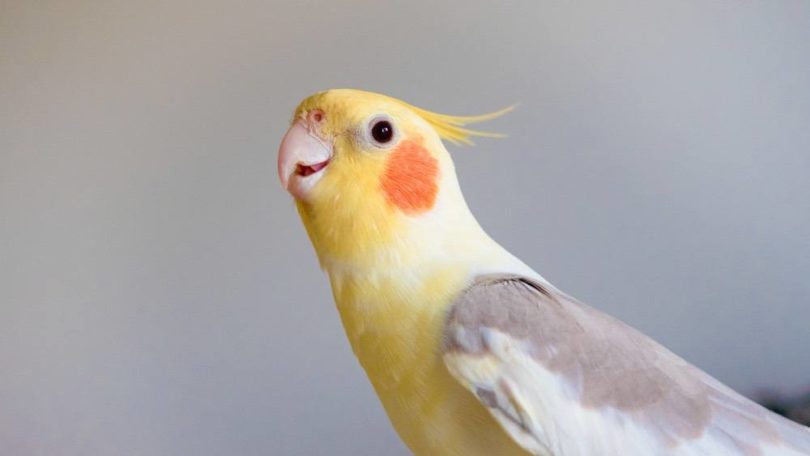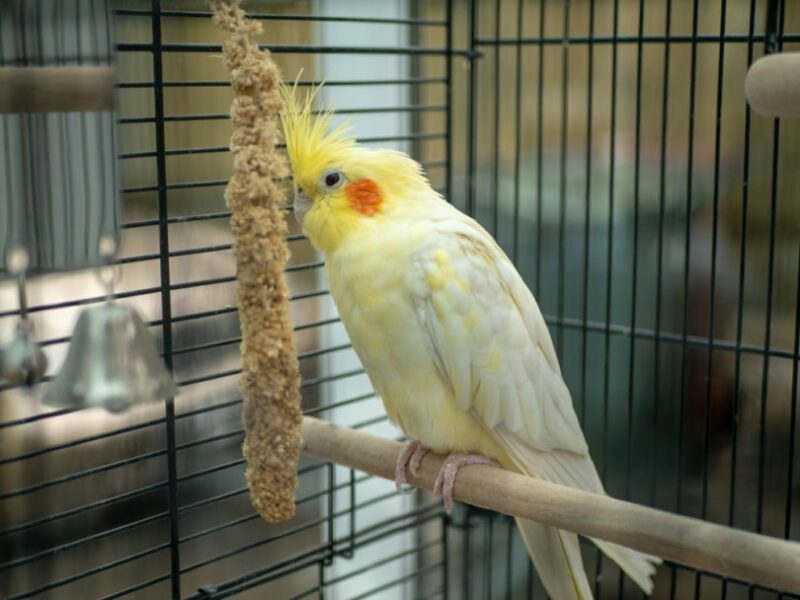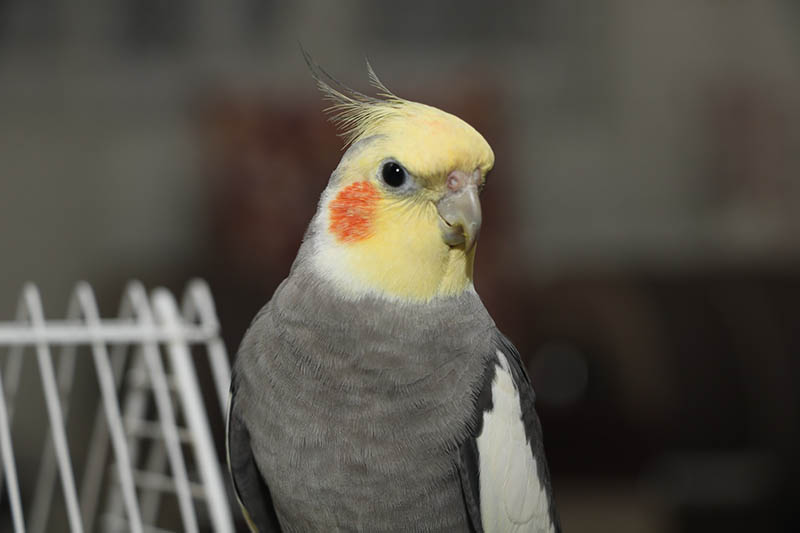Fallow Cockatiel: Pictures, Facts, & History

Updated on

Click to Skip Ahead
The Fallow Cockatiel is a color mutation of the Cockatiel. It is believed to have been first bred in the 1970s by Mrs. Irma Vowels in the USA. It is also known as the “Red-eyed Silver Cockatiel” because of its distinctive coloring. Its silver feathers and red eyes mean that this mutation is sometimes mistaken for the Cinnamon Cockatiel. The Fallow Cockatiel is potentially the most recently recognized Cockatiel mutation but it can be prone to blindness, which means that breeding it is somewhat controversial. Otherwise, though, it shares the same characteristics and traits as other Cockatiels.
| Height: | 12–14 inches |
| Weight: | 2–4 ounces |
| Lifespan: | 12–14 years |
| Colors: | Gray, brown, yellow, orange, red |
| Suitable for: | Experienced owners looking for an unusual color mutation |
| Temperament: | Friendly, fun, lively, intelligent |
The Fallow Cockatiel has silver rather than gray feathers and it has red eyes, giving rise to the mutation’s other name the “Red-Eyed Silver Cockatiel.” Somewhat unusually for Cockatiels, the female actually tends to be more colorful and is considered more attractive than the male. Cockatiels, in general, are friendly and lively birds. They are fun and they can make great pets because they enjoy spending time around humans and can be quite comical. They can also learn to imitate some sounds and, very rarely, a Cockatiel can learn to mimic a few human words.
Fallow Cockatiel Breed Characteristics
The Earliest Records of Fallow Cockatiels in History
Cockatiels originate from Australia and, in the wild, all Cockatiels are the traditional Gray Cockatiel that is most common in pet species. The birds became very popular as pets because they are friendly, lively, and colorful. To protect the native population of Cockatiels, the export and sale of Cockatiels in Australia was banned. As a result of this ban, all pet Cockatiels are now captive-bred, and the popularity of the bird means that there is a significant population in countries across the world. The Cockatiel is easy to find and inexpensive to buy.
The bird’s popularity saw breeders attempt to identify and concentrate on certain color mutations that occurred, typically cross-breeding those with desirable color mutations to continue the trend. The most recently recognized of these mutations is the Fallow. It was first bred in 1971 by Mrs. Irma Vowels.
How Fallow Cockatiels Gained Popularity
Cockatiels became popular initially in Australia because they are friendly, colorful, fun birds. These features saw the popularity of the species spread across the world. People that wanted to keep pet birds favored the Cockatiel because it is one of the smaller pet bird species. It is easier to keep than a Cockatoo or an African Gray, even if it doesn’t have the same vocal range or the same capability of mimicking human words. However, this popularity also meant that wild populations started to diminish, which led to a ban on exporting the bird.
The Fallow Cockatiel hasn’t really become that popular. This, at least in part, is because the mutation can lead to blindness, and the breeding of the mutation is therefore considered somewhat controversial.
Formal Recognition of Fallow Cockatiels
Bird species and mutations are not recognized in the same way as dog and cat, and even rabbit, species, so the Fallow Cockatiel is not formally recognized. Because of the heavy inbreeding used to encourage the Fallow characteristics, there is some controversy surrounding the breeding of this particular mutation, too.
The 3 Unique Facts About Fallow Cockatiels
1. Males Are Usually More Vocal
Although Cockatiels can mimic human words and speak a few words, it is not guaranteed that your Cockatiel will speak. However, the Cockatiel is known for whistling and it can make other noises too, including hissing noises. If you are looking to bring a Cockatiel into your home because you want the tuneful whistle, you would be better off opting for a male. Males are more inclined to whistle and they tend to be better at learning songs and mimicking noises. They also tend to have the most striking colors, although this is not true with the Fallow Cockatiels. In Fallow Cockatiels, it is the female that has the brightest and prettiest appearance.
2. Cockatiels Make Good First Pets
Cockatiels are lively, and fun, and they can form a close bond with their human owners. They can make good first feathered pets and even first general pets. However, they do need regular exercise and they can be quite messy.
3. They Can Be Demanding
If you are looking for a hands-off pet that doesn’t require too much attention or effort, though, you may be better looking for a different animal because the Cockatiel is quite a demanding little bird. If your Cockatiel feels you aren’t paying it enough attention, it can get quite raucous, and will certainly let you know when it is time to be fed or to have some time out of the cage.
Does a Fallow Cockatiel Make a Good Pet?
Cockatiels generally make very good pets. They are friendly and they quite enjoy being handled, which certainly isn’t true of all bird species. They can also whistle pretty songs and they are intelligent enough that they can be taught a few tricks and encouraged to hop on a finger, shoulder, or head, so they make good companions. Cockatiels will generally live up to 20 years in captivity, although most only live around 14 or 15 years.
While Cockatiels do make good pets for first-time owners, Fallow Cockatiels are a little different. They have been heavily inbred to encourage and pass on the Fallow mutation. This inbreeding is the likely reason that Fallow Cockatiels are prone to blindness and serious problems with their vision.
Conclusion
Cockatiels are one of the most popular species of pet birds. They make good pets for novices as well as experienced owners, although the increased likelihood of Fallow Cockatiels being blind means that this particular mutation may be better kept by more experienced owners.
Featured Image Credit: kikumin, Shutterstock










